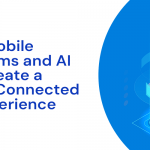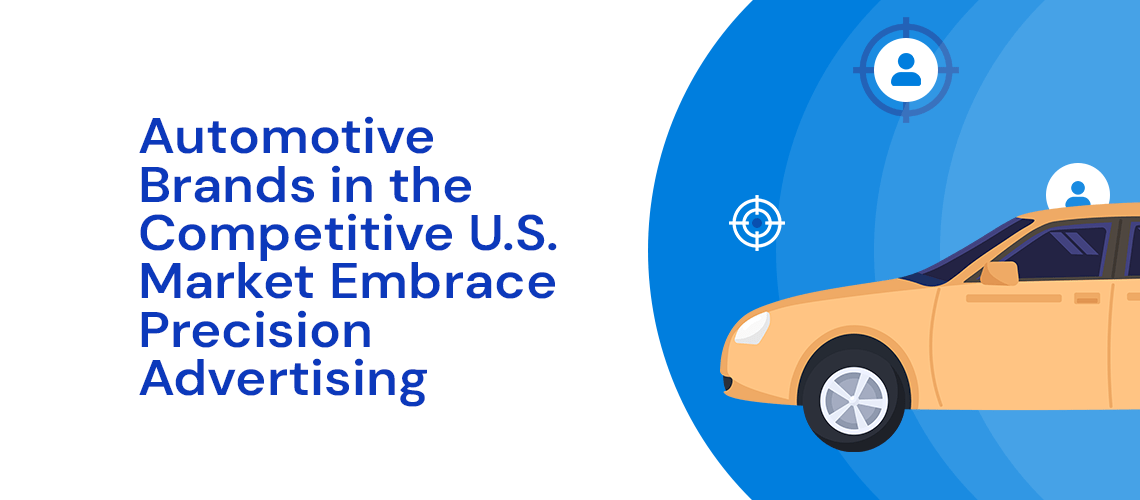
The Curation Movement in AdTech: Will It Become A Mainstay of Programmatic?
May 15, 2025
How Mobile Platforms and AI Will Create a Super Connected Ad Experience
October 28, 2025
The US$12 billion US automotive advertising market is one of the largest and most advanced in terms of personalisation and targeting.
Automotive buyers in the snowy North of the country are certain to have different needs and preferences than those in sunny Florida. Get your marketing wrong and off target, and an auto brand could suffer sluggish sales in a high stakes market. For car brands that advertise across the web and apps, they need to know if a target audience rates fuel efficiency, snazzy telematics, or luxury, or if they simply want a family-friendly vehicle.
Also, the choice for car buyers in the US is astonishing. There are more than 40 brands that sell vehicles in the United States, and many of them offer more than a half-dozen models, with some producing upward of 20 models. Auto brands must be precise with their marketing and media spend in order to win share.
That means heavy hitter brands Ford, Chevrolet, Honda, and Toyota, must compete with a host of luxury and niche brands, as well as Tesla, in order to ensure their vehicle sales remain strong. (Chinese EV brands are largely prevented from being sold in the US). Last year, 15.9 million vehicles were sold in the US, the highest sales figure since 2019, and a shot in the arm for car manufacturers after the pandemic slump period.
The new car purchasing decision often starts with a Google search, says marketing attribution and measurement platform Ruler Analytics.
“95% of car shoppers rely on online resources to gather information, bypassing dealerships as their starting point. Car buyers rule the research road online, doubling down on digital channels before hitting the dealership — a golden chance for marketers to grab their attention early,” said the research firm.

The rise of digital advertising and marketing solutions in auto buying
The automotive ad market in the US has often led other sectors in technology sophistication, and in the marriage of consumer preference data and digital advertising. According to research firm Analytics Research Consulting, big data analytics has been used by North American automakers to better understand consumer preferences and behaviors, resulting in more individualized and focused advertising efforts.
The firm also notes that the transition to digital and programmatic advertising has been expedited by alliances between automakers and IT firms, enabling more effective budgetary allocation and performance monitoring. For sure, automakers and car dealerships have embraced digital as a communications channel. Businesses are using social media, search engines, and streaming video to reach customers. Soon, AI platforms will become powerful recommendation engines. Brands will further invest in data analytics, machine learning, and artificial intelligence (AI) to guide the direction of their ad spend and segment marketing.
A key challenge for many auto brands is to balance the need for mass market reach as well as achieving true personalization at the moment a consumer undertakes online research. Consumers increasingly respond to and reward personalized experiences, while there is often a “creative-media” gap primarily caused by an overemphasis on media at the expense of creative content.
“Closing this gap represents the most significant growth opportunity for automotive brands. To address these gaps, brands need to implement independent ad tech platforms that connect the silos between teams, allowing the delivery of more efficient production, versioning, and distribution of creative. Essential to this solution is the enablement of personalization to ensure the most relevant and impactful brand message reaches the right consumer at the right moment.”
MediaOcean, a digital media buying platform, said it is crucial that auto brands must select adtech platforms that can be nimble and work with partners to ensure that target customers are served the right message to the correct audience.
“The ability to deploy intelligence for a deep understanding of what messages are connecting with different audiences and environments with granularity and transparency of data is imperative. With a comprehensive creative ad tech stack, auto advertisers can seamlessly integrate with existing platforms and collaborate with partners in both creative and media domains, empowering teams to effectively bridge the creative-media gap,” the MediaOcean report said.

Customer Segmentation Comes to the Fore
Improved advertising technology offerings are increasingly underpinning marketer strategies. Across desktop and mobile web, and in the mobile app space, automotive audience segments are combining deterministic car user data with AI-driven insights. These granular segments enable smarter targeting based on opt-in customer data that addresses ownership, lifestyle, location of the prospect, and auto servicing needs. The more precise the data, and the better understanding of consumer behavior, can catapult a brand’s awareness online.
Audience segmentation is crucial as there are nine different types of car buyers, says research firm Kadence International, including the eco-conscious buyer, budget seekers, technology (telematics) enthusiasts, and luxury consumers. The right ad in a targeted digital campaign plays a vital role in achieving brand cut-through.
Some other statistics tell the story of how automotive brands should execute their marketing.
The average automotive shopper spends 33% of their research time on a mobile device. This uptick in mobile usage during the research process drives millions of calls to US dealerships through digital ads and click-to-call buttons, says big data consumer research firm J.D. Power.
Furthermore, the watch time of “test drive” videos on YouTube has grown by more than 65% in the past two years, according to research cited by Google. And car buyers are spending a lot more time online before they zero in on their most likely purchase. Car buyers spend an average of nearly 14 hours online during their search. To appeal to the “always connected” shopper, you must optimize the car-shopping experience across all devices, said auto marketing firm Cox Automotive.
These data points show that automotive brands, and the media agencies that drive digital channel planning must invest across the buyer journey and ensure their messaging is relevant to a defined target audience.
